Middle East Islamic Finance Market Size
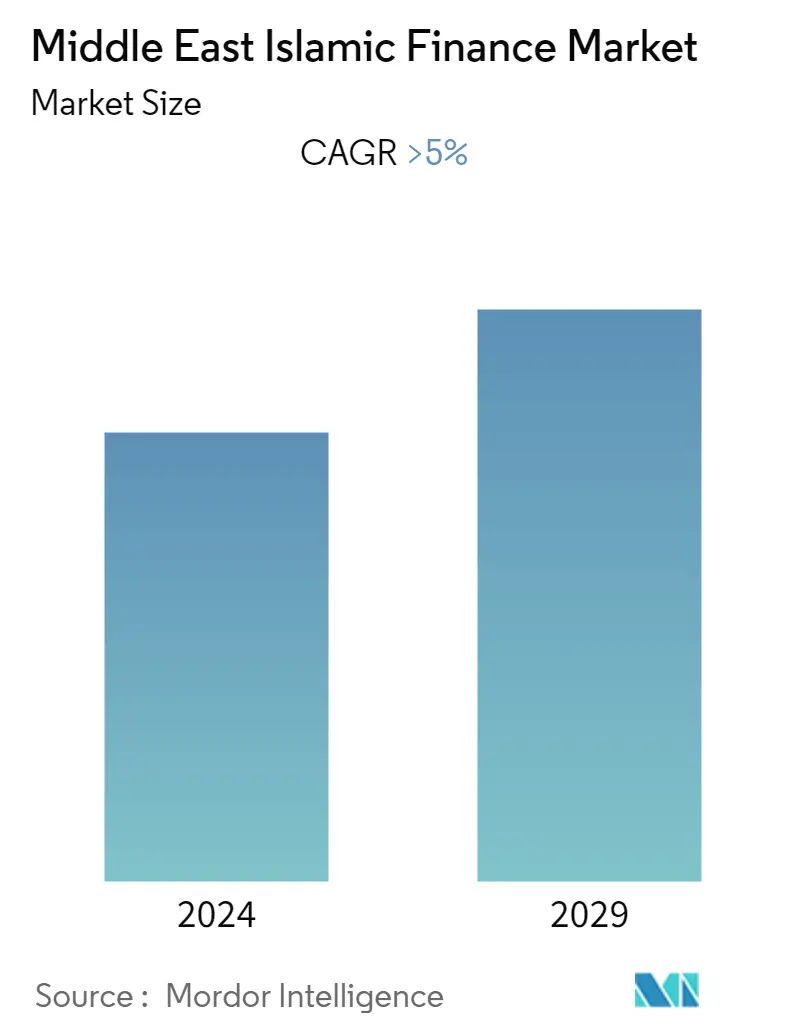
| Study Period | 2019 - 2028 |
| Base Year For Estimation | 2021 |
| Forecast Data Period | 2024 - 2028 |
| Historical Data Period | 2019 - 2020 |
| CAGR | > 5.00 % |
| Market Concentration | Medium |
Major Players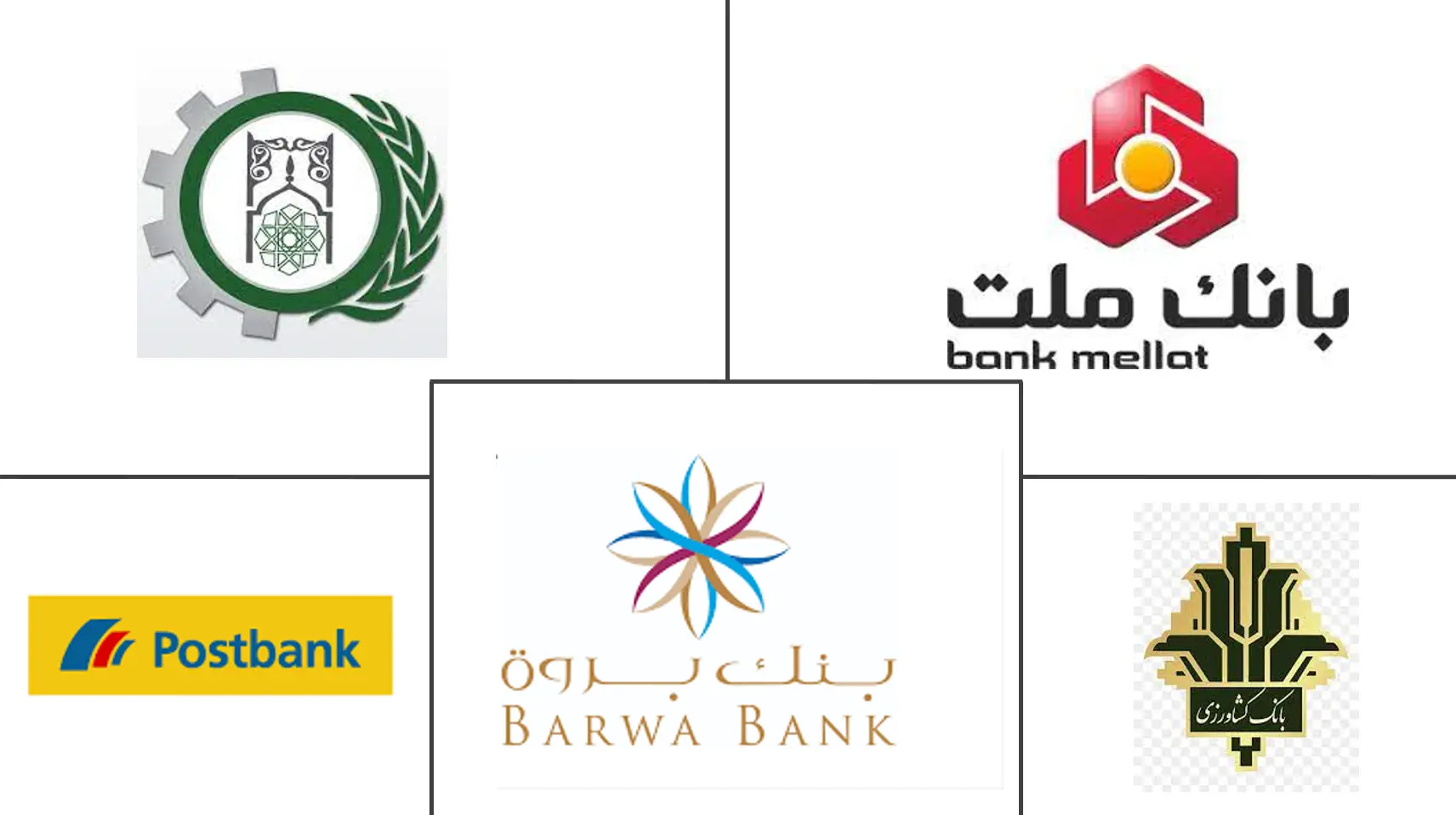
*Disclaimer: Major Players sorted in no particular order |
Need a report that reflects how COVID-19 has impacted this market and its growth?
Middle East Islamic Finance Market Analysis
The COVID-19 pandemic majorly impacted the finance and non-finance sectors in the Middle East. The steep decline in oil prices and overall strain on the economic activities hindered the growth of the Islamic finance sector. However, the industry quickly recovered in the second half of 2020, which overall growth of 5% in Islamic banking and finance assets. Islamic finance is predicted to hold a significant share in the overall finance industry in the Middle East majorly in the areas of personal finance, thus, ensuring the growth of the industry.
The importance of the wider Middle East region continues to be clear, accounting for 77.4% of total sharia-compliant assets in the latest ranking, down slightly from 2019, when the region represented 79.5% of assets.
Iran and Saudi Arabia remain by far the largest markets when it comes to sharia-compliant assets, with both markets having more than $400bn in assets. Six of the 10 largest Islamic lenders come from those two countries, with only one, Malaysia’s Malayan Banking Berhad (Maybank), coming from outside the Middle East.
Islamic finance is deeply rooted in the Middle East, a region which continues to shape the modern Islamic finance industry globally. Commanding the lion share of global Islamic banking and finance assets and wielding enormous influence in the industry, the Middle East has always been an integral part of IFN.
Middle East Islamic Finance Market Trends
This section covers the major market trends shaping the Middle East Islamic Finance Market according to our research experts:
Demand for Shari’ah Compliant Products from Financiers
The popularity of Islamic banking products has outpaced that of conventional banking in the UAE. While the popularity of Islamic banking among consumers has grown from 47% in 2015 to 60% in 2021, that of conventional banking is on a downward trend in the same period down from 70% to 61%.
According to 2021 Islamic Banking Index, for the first time since the launch of the index, the gap between the penetration of conventional and Islamic banking products in the UAE has narrowed to just 1 percentage point, with 61% of the surveyed customers say they have a conventional product compared to 60% who have an Islamic product.
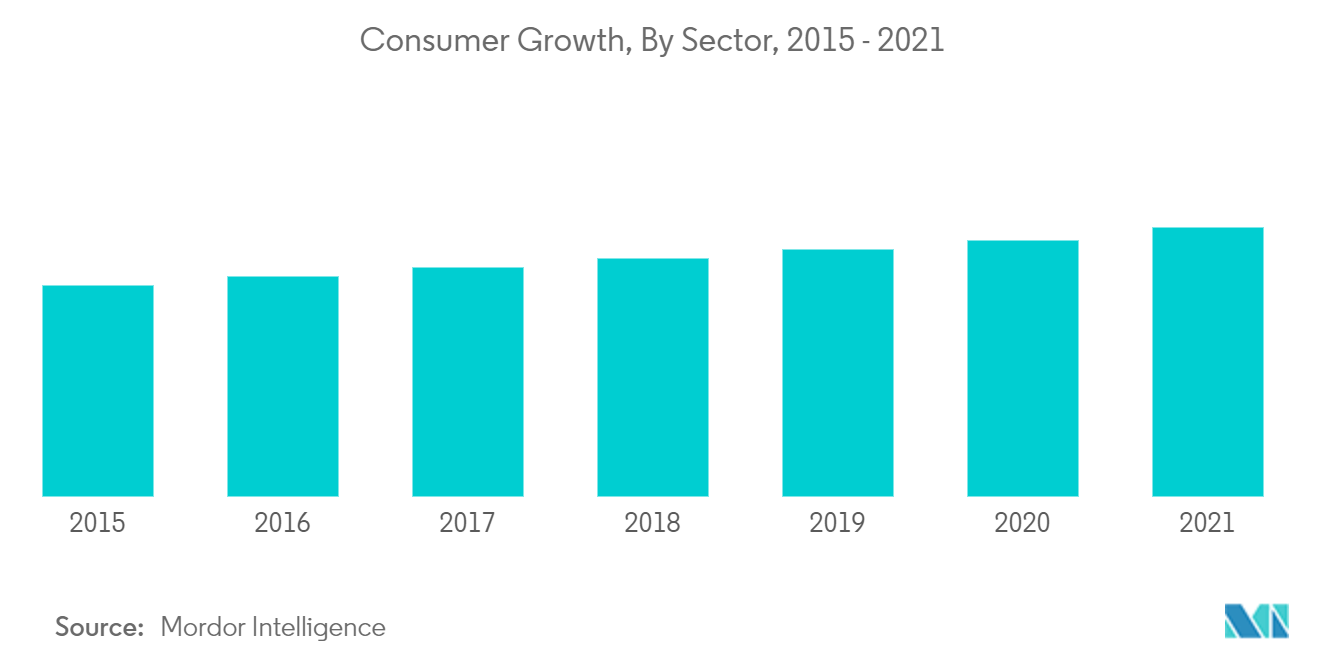
Islamic Banking is the Largest Segment
Islamic Banking has come a long way over past few decades , maturing into a $2.4 trillion industry. Islamic finance has now become an important element in the development agenda of the Middle East countries. It is also gaining significance in the financial landscape of the region as well as of the individual countries.
The demand for Islamic banking is rising rapidly in the Middle East and globally, with the sector projected to reach $3.8 trillion by 2023, fuelled by the increasing shift in customers’ preference for social responsibility as a key motivation for using banking and financial sector products and services, a sector expert said.
The growth of the halal industry is also adding to the current momentum in the Islamic Banking sector.
“Islamic finance shares some core values with ESG (environmental, social and governance) and ethical banking, which could see it benefit from the broader appeal of sustainable finance. With social responsibility becoming a key motivation in the products and services customers use, we’re [currently] seeing a surge in the demand for Islamic banking.”
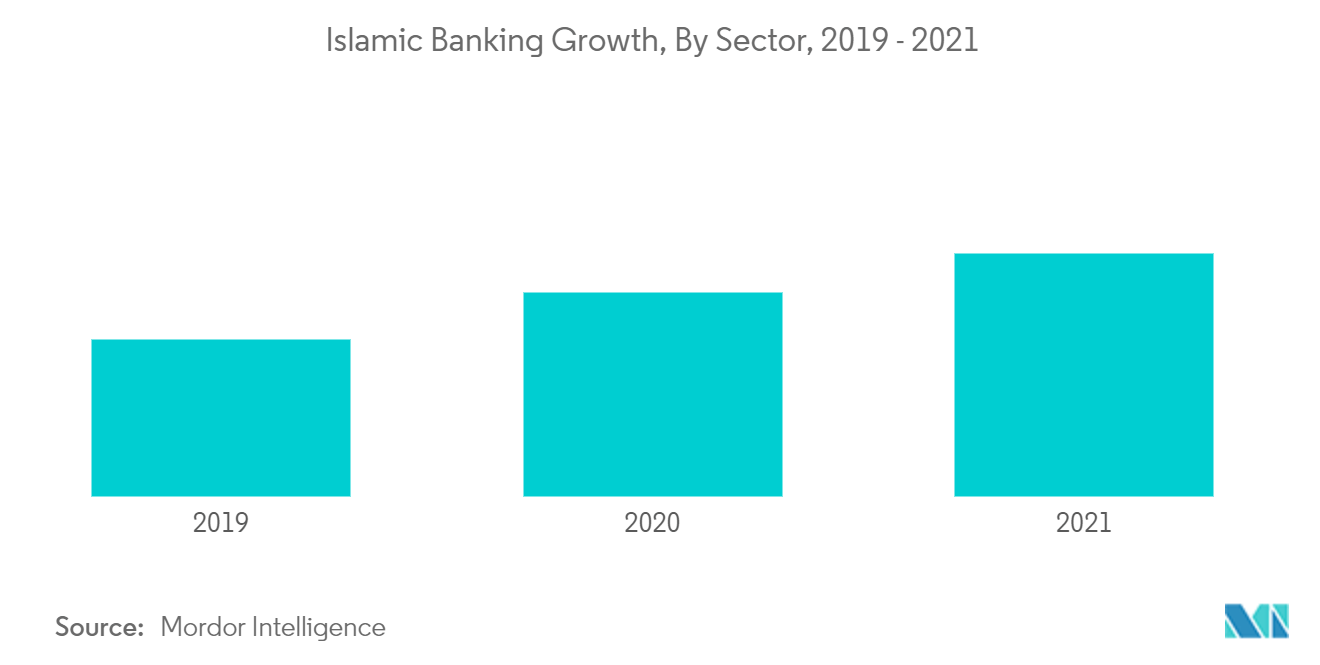
Middle East Islamic Finance Industry Overview
The report covers major international players operating in the Middle East Islamic Finance Market. In terms of market share, some of the major players currently dominate the market. However, with technological advancement and product innovation, mid-size to smaller companies are increasing their market presence by securing new contracts and by tapping new markets. Barwa Bank, Iraqi Islamic Bank of Inv & Dev, Mellat Bank, Post Bank of Iran and Bank Keshavarzi are a few of the major market players.
Middle East Islamic Finance Market Leaders
Barwa Bank
Iraqi Islamic Bank of Inv & Dev
Mellat Bank
Post Bank of Iran
Bank Keshavarzi
*Disclaimer: Major Players sorted in no particular order
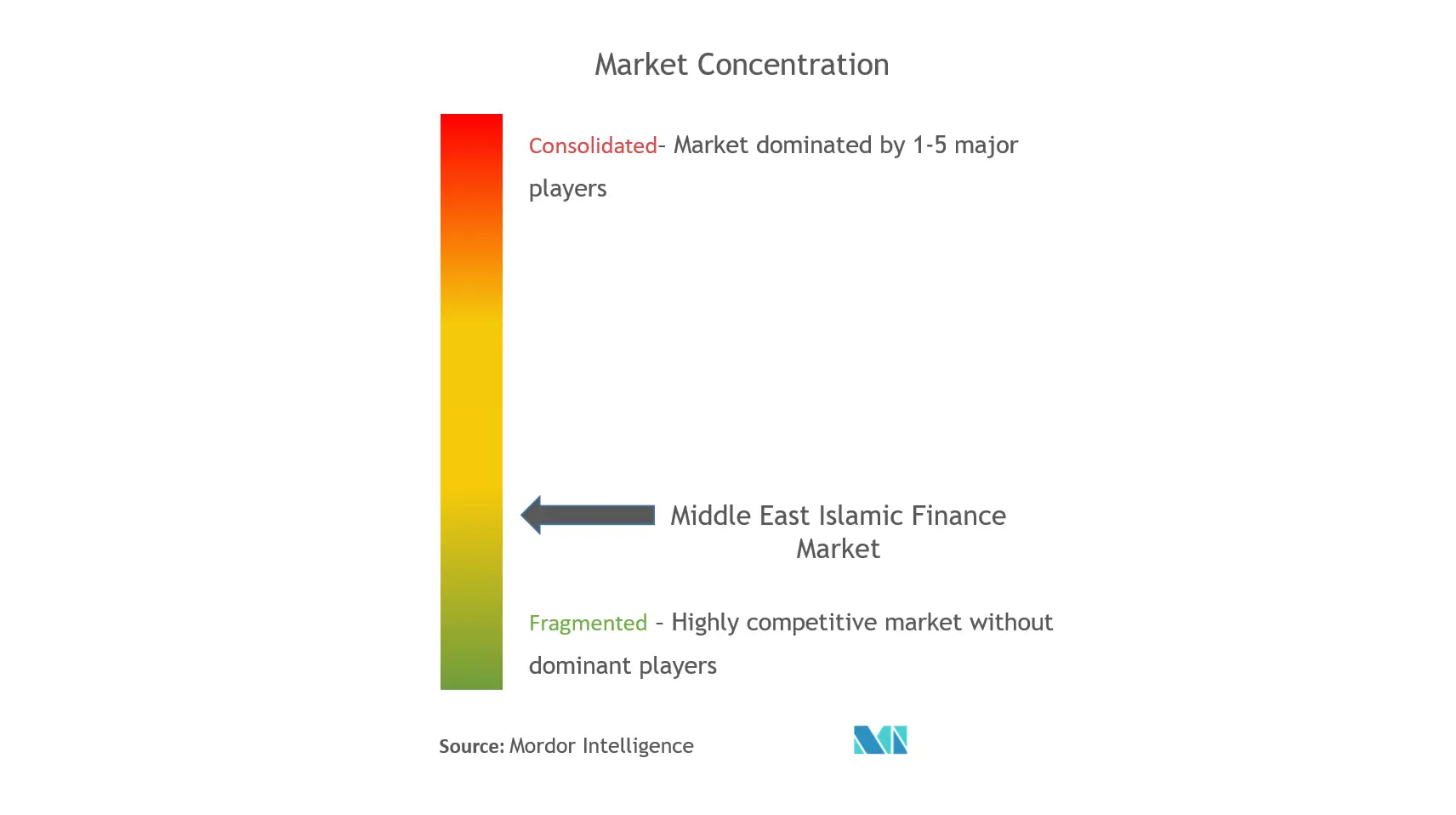
Middle East Islamic Finance Market News
- Aug 2021: Pepper Launched by Israeli Bank Leumi. It is a mobile-only banking subsidiary. Pepper offers savings and lending products, with no checking account fees. Pepper launched a new investment app that aims to attract young people to buy fractional shares.
- May 2021: Most recently, Saudi-based National Commercial Bank merged with Samba Financial Group to create the Kingdom’s largest bank, with assets of over $230 billion. The institution was renamed as Saudi National Bank and began operations in April 2021. Similarly, Indonesia recently finalized the merger of Islamic banking units of three state-owned banks, creating the country’s largest Shariah-compliant bank, with assets of $17.1 billion.
Middle East Islamic Finance Market Report - Table of Contents
1. INTRODUCTION
1.1 Study Deliverables
1.2 Study Assumptions
1.3 Scope of the Study
2. RESEARCH METHODOLOGY
3. EXECUTIVE SUMMARY
4. MARKET DYNAMICS
4.1 Market Overview
4.2 Market Drivers
4.3 Market Restraints
4.4 Porters 5 Force Analysis
4.4.1 Threat of New Entrants
4.4.2 Bargaining Power of Buyers/Consumers
4.4.3 Bargaining Power of Suppliers
4.4.4 Threat of Substitute Products
4.4.5 Intensity of Competitive Rivalry
4.5 Impact of COVID-19 on Industry
5. MARKET SEGMENTATION
5.1 By Financial Sector
5.1.1 Islamic Banking
5.1.2 Islamic Insurance 'Takaful'
5.1.3 Islamic Bonds 'Sukuk'
5.1.4 Other Financial Institutions (OIFL's) and Islamic Funds
5.2 By Geography
5.2.1 Saudi Arabia
5.2.2 Qatar
5.2.3 Iraq
5.2.4 Iran
5.2.5 United Arab Emirates
5.2.6 Others
6. COMPETITIVE LANDSCAPE
6.1 Company Profiles
6.1.1 Barwa Bank
6.1.2 Iraqi Islamic Bank of Inv & Dev
6.1.3 Mellat Bank
6.1.4 Post Bank of Iran
6.1.5 Bank Keshavarzi
6.1.6 Abu Dhabi Commercial Bank
6.1.7 Saudi British Bank
6.1.8 Riyad Bank*
- *List Not Exhaustive
7. MARKET OPPORTUNITIES AND FUTURE TRENDS
8. DISCLAIMER
Middle East Islamic Finance Industry Segmentation
Islamic banking, Islamic finance, or Sharia-compliant finance is banking or financing activity that complies with Sharia and its practical application through the development of Islamic economics. Some of the modes of Islamic banking/finance include Mudarabah, Wadiah, Musharaka, Murabahah, and Ijara.
A complete background analysis of the Middle East Islamic Finance Market, which includes an assessment of the National accounts, economy, and the emerging market trends by segments, significant changes in the market dynamics, and the market overview is covered in the report.
The Middle East Islamic Finance market can be segmented By Financial Sector (Islamic Banking, Islamic Insurance ‘Takaful’, Islamic Bonds ‘Sukuk’, Other Islamic Financial Institutions (OIFL’s), and Islamic Funds), By Geography (Saudi Arabia, Qatar, Iraq, Iran, United Arab Emirates and others).
| By Financial Sector | |
| Islamic Banking | |
| Islamic Insurance 'Takaful' | |
| Islamic Bonds 'Sukuk' | |
| Other Financial Institutions (OIFL's) and Islamic Funds |
| By Geography | |
| Saudi Arabia | |
| Qatar | |
| Iraq | |
| Iran | |
| United Arab Emirates | |
| Others |
Middle East Islamic Finance Market Research FAQs
What is the current Middle East Islamic Finance Market size?
The Middle East Islamic Finance Market is projected to register a CAGR of greater than 5% during the forecast period (2023-2028).
Who are the key players in Middle East Islamic Finance Market?
Barwa Bank, Iraqi Islamic Bank of Inv & Dev, Mellat Bank, Post Bank of Iran and Bank Keshavarzi are the major companies operating in the Middle East Islamic Finance Market.
Middle East Islamic Finance Industry Report
Statistics for the 2023 Middle East Islamic Finance market share, size and revenue growth rate, created by Mordor Intelligence™ Industry Reports. Middle East Islamic Finance analysis includes a market forecast outlook to 2028 and historical overview. Get a sample of this industry analysis as a free report PDF download.
